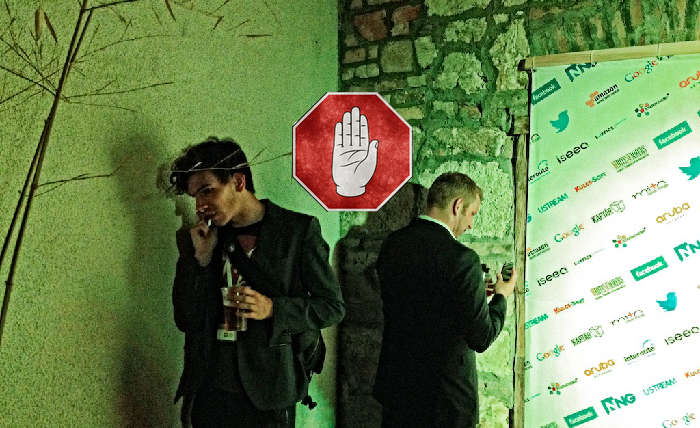Management in the Now
Occasionally I get the question from managers I meet: ”How can I be a manager, and at the same time coach my employees? One moment I am leading, and the next I am supposed to be supportive and understanding. That will get confusing for everyone.”
It is of course a balance, and if you as a manager think it is either or, I will make the claim that you are in dire straits. You don’t lead your employees constantly from the moment you enter the office, right?
A comment that often follows is; “I also can’t set so much time aside for each person all the time!”
Of course not. But you can choose to view coaching as a part of your management role from a whole different perspective.
Coaching as micro intervention
Rather than (only) seeing coaching as a specific type of conversation, try to see it as an every-day intervention method. Look at it on a micro scale, as when you ask one of your employees: “How’s it going?” or “So, how was the reaction to the email you sent out?”
For you as a manager, answers to these kinds of questions give you a sense of the current situation for an employee, and makes you aware of the effect of a piece of work done in a certain context.
This can be done better, more directly, and at the same time brief. But let’s first look at what areas a manager typically covers.
Instruct
As a manager you have to make sure that the rules and goals of the business and organization are understood, followed or achieved by the employees. It is also your responsibility to make sure the employees understand their job descriptions and fulfill them. There can be a small space for discussions about exactly how to achieve everything, but on the whole, this is an area in which you instruct and decide what is possible and not.
Supervise
To have an advising role means that the manager draws on his or her own experiences and lets these help the employee. This can be in relation to a concrete task where you know that “if such and such is done, this will happen.” Here, you offer advice based on your experience and expertise, and you can also draw on your network here if you find it necessary.
Support
Most managers find it logical to place coaching here. The manager must take care of the thriving and development of the employee in the job. And certainly, a coaching-ish conversation with open-ended questions can help to clarify for the employees what job satisfaction is, and how they wish to fulfill their job functions in the best ways possible.
But if coaching can fit into all three areas, how would that look? It is here that the micro intervention comes in. As mentioned earlier, rather than viewing coaching as a whole conversation with a start and an end, view it instead as small questions here and there, that have the purpose of:
- Supporting the development of a person and his or her expertise
- Creating awareness and clarity about advancement towards goals and deadlines
- Making sure that what the employee is doing makes sense, not only for the organization, but also for the employee.
Management in the now
If you are curious (which I assume that you are, since you have read this far), and want to try out micro intervention, I here offer you three suggestions. – And I am sure that you’re already doing part of it, without being aware of it.
Micro intervention 1
a) How far are we, what is already clear to us, and what can we build on?
Ask about what already works. Listen to what has already been done and then find – in collaboration – a link to what to build on. It is human not to be able to see the bigger picture, and this is where your overview comes in. Which is precisely the ability to ask, create the necessary clarity, and then get out of their way.
B) What have we done earlier – in other situations – that has helped us?
Ask about the experiences that have already been gained, and be curious about what shows up. Quite often, good experiences from other areas can be useful. And who can know this better than the employees who have the task? They are after all the ones who will complete the work. Make sure your expertise doesn’t stand in the way of your employees utilizing theirs.
Micro Intervention 2
Ask twice before saying anything.
When you want to suggest solutions and give advice, take another round of asking first. – And then another one. This not only gives you a better overview of what others are thinking, but also gives them a chance to become more clear on themselves and the task.
Does it matter what kind of questions you ask? Of course! Focus on what has already been considered. All things being equal, this will also provide you with a sense of whether the necessary resources and competences are present in order to solve the task. If yes, then how can you further support these? If no, what help is then needed from the outside?
Micro Intervention 3
What else?
When you are having a conversation with an employee or a team, there is one question that is the perfect illustration of a micro intervention: “What else?” When you listen to a wish or a need, avoid going into solution-mode immediately. Make sure to get as many details as possible. It continues to impress me how much a person or a team can put forward in response to such a simple question.
What else has been tried? What else have you thought about? What else is already clear to you? What else do you think is an important next step from here?
Decide on a focus
As you have probably figured out, the interventions are centered on uncovering existing resources and creating awareness of the next possible actions going forward.
It is very purposefully that these interventions do not focus on reasons why something isn’t working, and there’s a good reason for this. Depending on which type of professional area you’re a manager of, you have to consider if meticulously studying mistakes is something it is worth spending time on at all.
Try the three micro interventions and see if they make a difference, but be aware – It can uncover amazing resources you didn’t see before!
—————————
Jesper H Christiansen is a coach, trainer and consultant working internationally with both SME’s and global entreprises.
As a Professional Certified Coach (ICF) and certified Solutionsurfers trainer he works with managers and teams on all levels in organisations.
As Edgeware Creative Entrepreneurship Europe he helps entrepreneurs and start-ups to transfrom from passionate innovators to passionate leaders.










